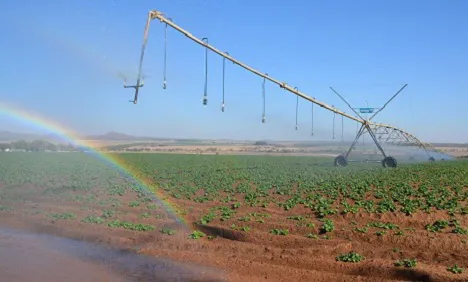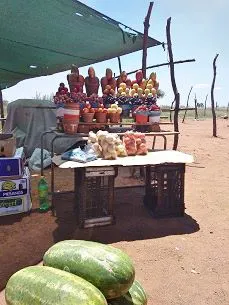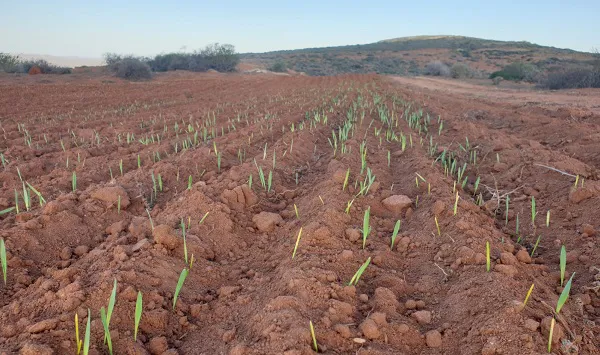The South African Bureau for Agricultural and Food Policy expects the country’s economic recovery to be a prolonged process “with real GDP only projected to exceed 2019 levels by 2026”, according to their newly released baseline report. The fresh produce industry will be significantly affected by shrinking consumer demand and interrupted supply chains.
One of the authors of the report, Prof Ferdi Meyer, was in conversation with Dr Sifiso Ntombela of the National Agricultural Marketing Council and Prof Philippe Burger, economist from the University of the Free State at the PMA Fresh Connections 2020 conference.
They painted a picture of a South Africa whose rural population will be draining away to the cities. Urbanisation is the node around which South Africa’s many development plans need to pivot, Prof Burger stated.
“The rural population is never again going to be as high as it is now,” he said. “The Council for Scientific and Industrial Research (CSIR) forecasts that within the next fifteen years we will see between 12 to 14 million people added to the urban population. To put that into perspective: the province of Gauteng currently has approximately 14 million inhabitants. These will be people who need to eat, so there’s an enormous opportunity here.”

Jobless migration
South Africa’s population is around 58 million of whom approximately 28% live in communal lands, often corresponding to apartheid-era rural homelands, hence generally thinly resourced.
There is a jobless migration taking place at the moment, Dr Ntombela also pointed out, as people look for opportunities in cities, opportunities which often aren’t there. This represents either the biggest threat or the biggest opportunity to South Africa.
“What we need to do is build a new rural middle-class that can expand the domestic market,” Dr Ntombela continued, referring to the Western Cape model where “you don’t have rural areas, you have farming communities."
The creation of a new rural middle-class and farming communities is cardinal, he said. "If we can get this right within the next ten years, it would be our biggest achievement.”
Honesty about outdated assumptions  Agriculture and processing is one of the easiest ways to revitalise a rural economy and evolve it into a farming community, he said. “It allows low-skill entrants, it’s able to link them to the formal economy, thereby uplifting household income in rural areas.”
Agriculture and processing is one of the easiest ways to revitalise a rural economy and evolve it into a farming community, he said. “It allows low-skill entrants, it’s able to link them to the formal economy, thereby uplifting household income in rural areas.”
“But for the creation of this new rural middle class to happen, South Africa will have to start being honest about some of the misfortunes in terms of some of the assumptions and decisions that have guided the system that we have currently. Some of them worked out very well, some of them have been proven wrong from what they assumed because they were taken under a completely different set of circumstances from what we have today.“
Prof Burger noted that land tenure rights for inhabitants of the communal lands – under direct authority of traditional leadership structures – have after all these years still not been resolved, severely curtailing the ability of farmers in these areas, unable to obtain credit, to improve their land.
Skyrocketing plant protection fees
The weak exchange rate is hugely benefiting export sectors like macadamias (90% exported of local production), and definitely offsets rising input costs, but the vegetable sector is to a far greater degree subject to the depressed level of demand on the domestic market.
Many inputs are priced at international prices. On fertilisers South African farmers are 80 to 85% dependent on imports (despite South Africa’s self-sufficiency in phosphates, Prof Meyer noted; he mentioned movement to develop local sources of nitrogen and phosphorus).
Plant protection royalties are skyrocketing, he said, adding that it was of concern to them.

Uncertain water future
South Africa’s water future is not certain. Competition for water is only going to become more acute.
Farming adaptations in response to the recent Cape drought are evident when looking at flyover data of the province said Prof Meyer.
“We’ve seen a 300% increase in shade netting and much more use of tunnels in the Western Cape. We can see at farm level there is definitely a response to more efficient water use. The question is: how efficient can we be?”
